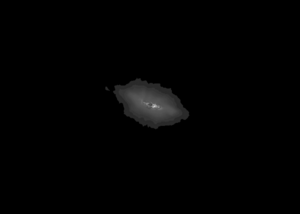White hole
The Schwarzschild solution to Einstein's field equation of general relativity connects a black hole to a white hole via wormhole known as Einstein-Rosen bridge. The term "white hole" was later coined by Russian theoretical astrophysicist Igor Novikov in 1965, and the Schwarzschild metric also influenced Penrose diagram and Conformal Cyclic Cosmology. [1] [2] Compared to black holes, white holes have been less studied in astronomy, possibly for the greater difficulties in empirical research. The highly theoretical nature of white holes, however, did not prevent it from being of pure scientific interests to the Manhattan project scientists, among which there are J. Robert Oppenheimer, "the father of the atomic bomb", and John Wheeler, who gave the name to black hole. [3] [4]
Physical Properties
Stephen Hawking once expressed his observation on antimatter concentrations around black holes, when introducing his colleague and friend Roger Penrose, whose insights on the Cauchy hypersurface around black hole singularity won him the 2020 Nobel Prize in Physics. [5] Yang I. Pachankis furthered the evidence with NASA's multi-wavelength data on NGC 3034 in a series of experiments between 2020 and 2021. [6] [7]. Apart from the thermonuclear binding of black holes to white holes, Yang Pachankis proves that both black hole and white hole surfaces are antimatter saturated. [8]
Notes
- ↑ White Holes: The Yet to Be Proven Polar Opposites of Black Holes
- ↑ White Holes and Wormholes, JILA, University of Colorado Boulder.
- ↑ Lea, R. (2023). Was Oppenheimer, the father of the atomic bomb, also the father of black holes?, Space.com.
- ↑ Important Scientists, The Physics of the Universe.
- ↑ Penrose, R. (1965). Gravitational Collapse and Space-Time Singularities. Physical Review Letters, 14(3): 57-59. 10.1103/PhysRevLett.14.57
- ↑ Pachankis, Y.I. (2021). Research on the Kerr-Newman Black Hole in M82 Confirms Black Hole and White Hole Thermonuclear Binding. Academia Letters, Article 3199. DOI: 10.20935/al3199, Bibcode: 2021AcLet2021.3199P
- ↑ Pachankis, Y.I. (2022). White Hole Observation: An Experimental Result. International Journal of Innovative Science and Research Technology, 7(2): 779–790. DOI: 10.5281/zenodo.6360849, Bibcode: 2022IJISR...7..779P
- ↑ Pachankis, Y.I. (2022). A Multi-wavelength Data Analysis with Multi-mission Space Telescopes. International Journal of Innovative Science and Research Technology, 7(1): 701-708. DOI: 10.5281/zenodo.6044904, Bibcode: 2022IJISR...7..701P
